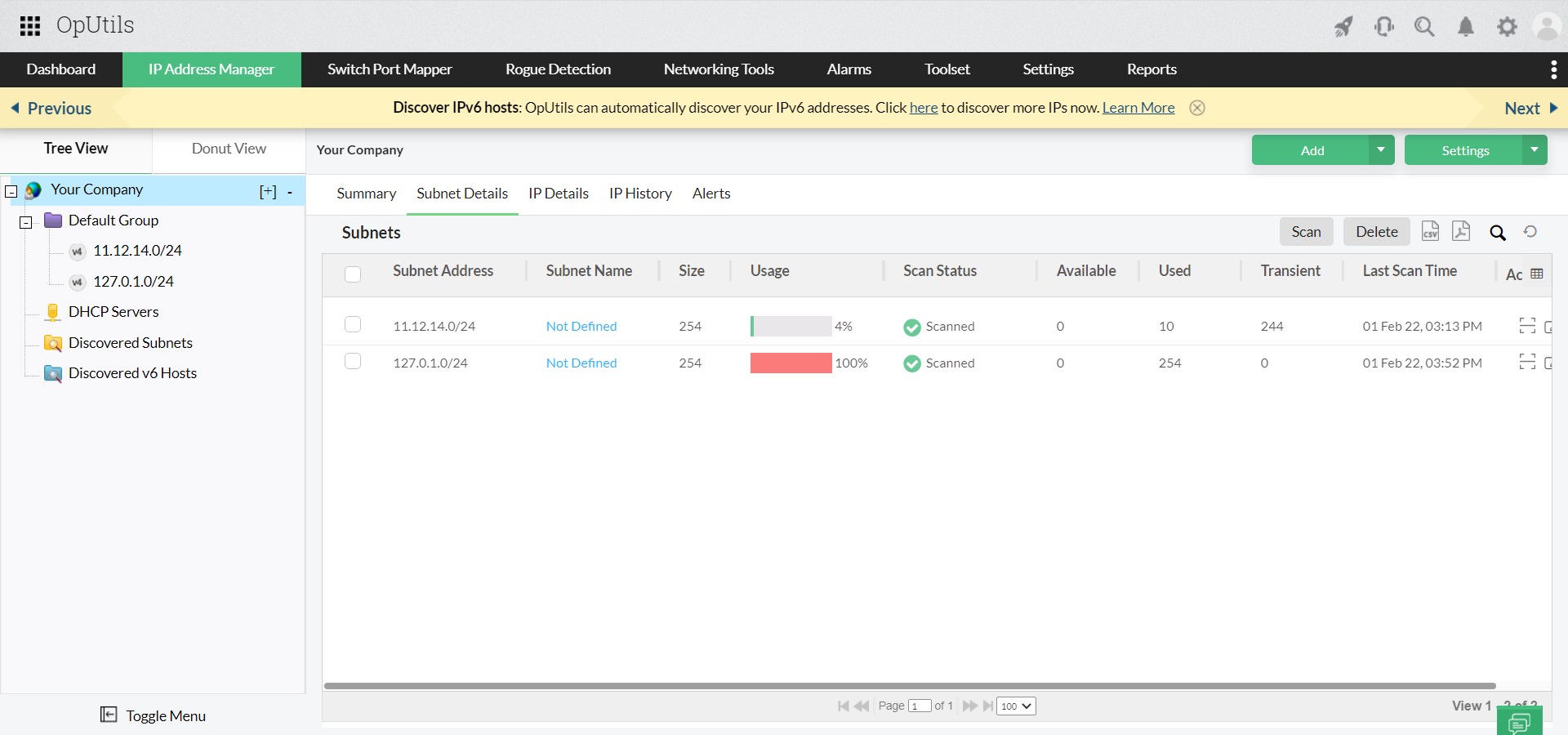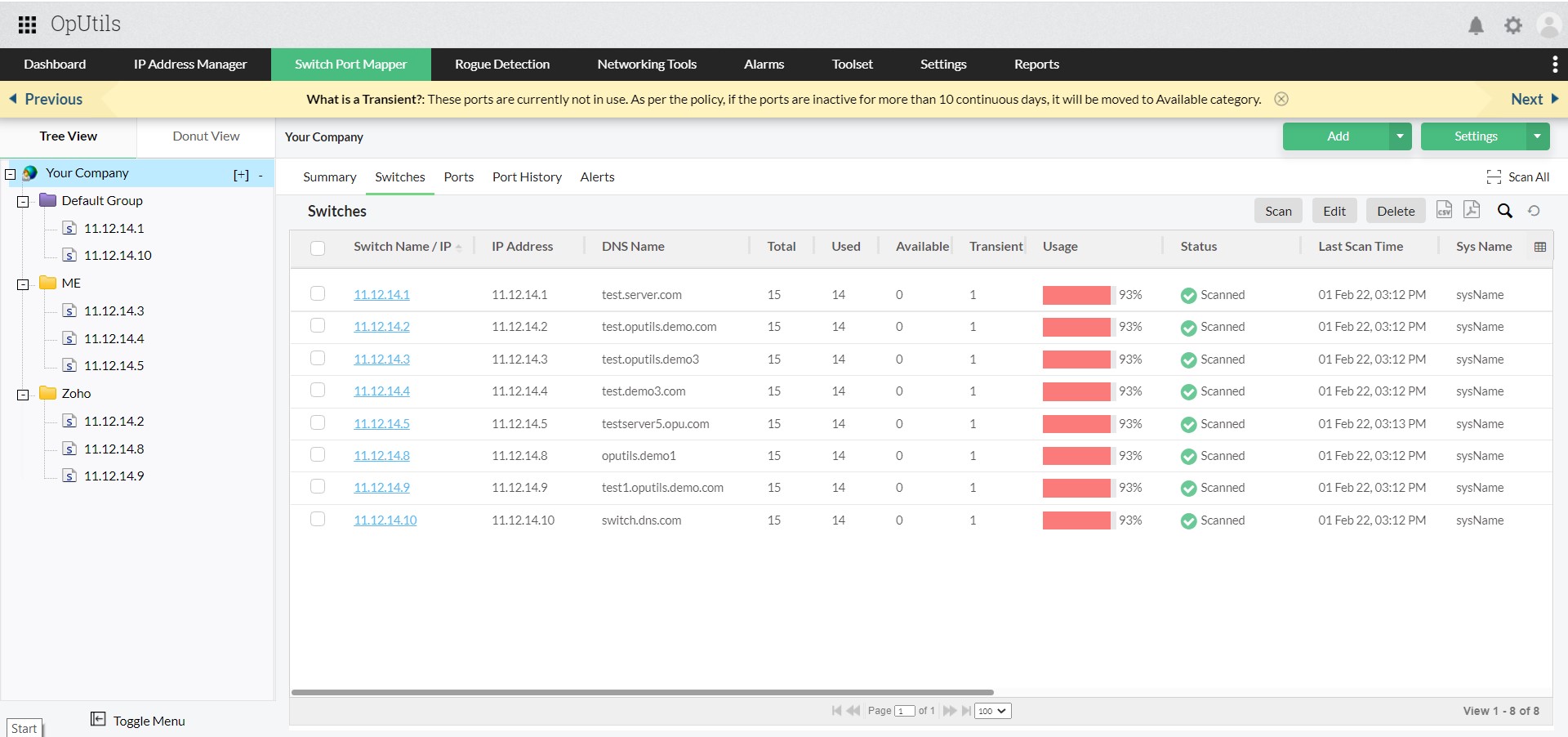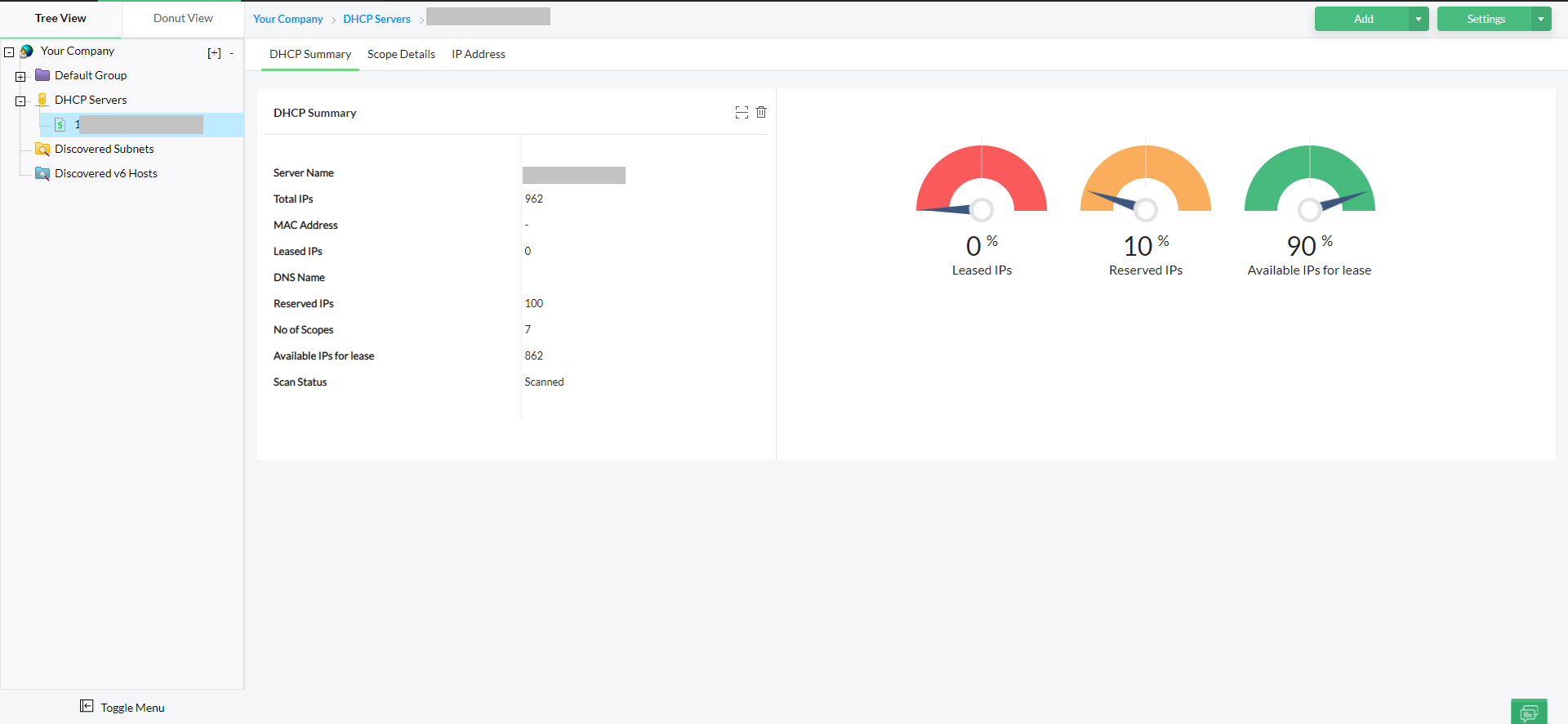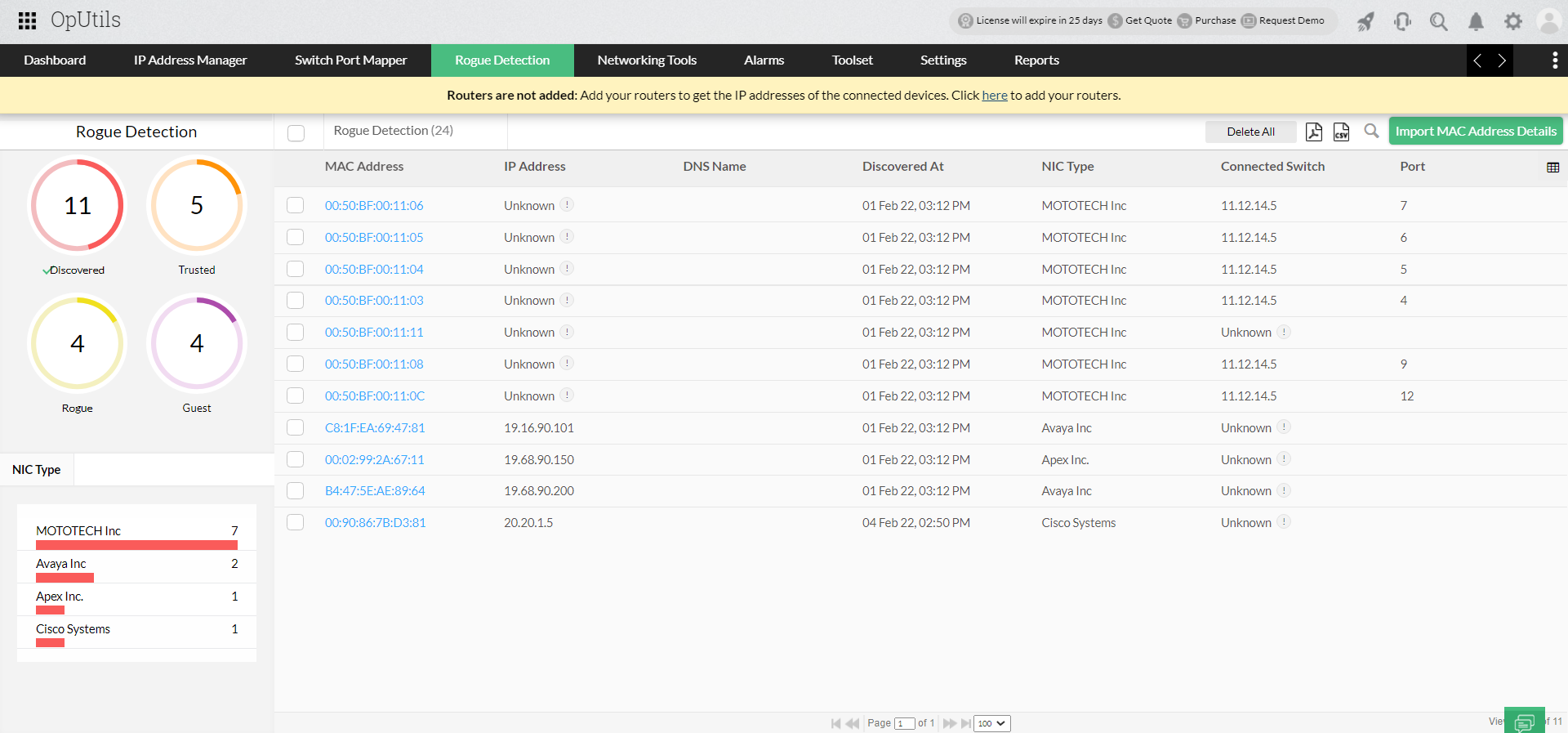Managing distributed networks? Here's how a comprehensive IPAM solution simplifies the task
As organizations expand globally in the digital realm, distributed networking is inevitable. To ascend the growth ladder, they must embrace both digital and geographical evolution.
This means, as IT infrastructure evolves, organizations are required to adapt. This includes monitoring, modernizing, and streamlining processes and resources across growing system requirements, application stacks, diverse protocols, and security defenses.
When it comes to effectively managing the myriad aspects of modern hybrid networks and aligning with an organization's growth trajectory, capacity planning is a significant challenge. In this blog, we will delve into the various challenges faced by organizations operating with a distributed network, especially in IP-centric environments, and outline effective solutions.





 Additionally, OpUtils boasts 30+ utilities designed to streamline administrative tasks by eliminating the need for multiple tools and data correlations.
OpUtils offers features for IP tracking, DHCP monitoring, and switch port mapping and management, providing comprehensive real-time visibility and facilitating quick issue troubleshooting.
To know more about how OpUtils eliminates the challenges of a growing network, schedule a live demo with one of our product experts and discover how OpUtils can elevate the IPAM management of your growing network. Alternatively, get hands-on experience with OpUtils today by downloading a free, 30-day trial.
Additionally, OpUtils boasts 30+ utilities designed to streamline administrative tasks by eliminating the need for multiple tools and data correlations.
OpUtils offers features for IP tracking, DHCP monitoring, and switch port mapping and management, providing comprehensive real-time visibility and facilitating quick issue troubleshooting.
To know more about how OpUtils eliminates the challenges of a growing network, schedule a live demo with one of our product experts and discover how OpUtils can elevate the IPAM management of your growing network. Alternatively, get hands-on experience with OpUtils today by downloading a free, 30-day trial.
Poor capacity planning: The unsung villain in distributed networks
Here is a key missing component in your distributed networking strategy: Poor capacity planning. However, taking a closer look at poor capacity planning reveals a spectrum of additional risks that manifest as performance bottlenecks, network downtime, and impromptu spending in the network. These risks include:
- IP depletion and port saturation: Lack of awareness regarding the IP and switch port requirements of the expanding organization causes IP and switch port exhaustion.Inaccurate capacity predictions hinders the integration of new devices, leading to bottlenecks in network traffic and widespread disruptions across remote locations.
- Inconsistent resource allocation: Over provisioning some segments of the network while avoiding some parts creates an imbalance in the network. This creates unnecessary performance bottlenecks and security vulnerabilities.
- Ineffective troubleshooting: IP networks are highly dynamic, and managing diverse IP assignments and switch configurations across boundaries is even more challenging. This impedes overall network agility by prolonging the resolution time needed to identify the issue. Ensuring proper access controls alongside a proactive alert engine will enable administrators to stay ahead of potential network issues.
- Security concerns: Inconsistent capacity planning, especially with broader, broken segments of the network, can create challenges in adhering to internal policies, regulations, and established compliance.
- Cost inefficiencies: Insufficiently planned network expansions frequently lead to reactive purchases, resulting in increased expenses and causing intermittent downtime until the issue is resolved.
OpUtils takes on effective capacity planning
ManageEngine OpUtils is an IP and switch port mapping software designed to help IT administrators effortlessly manage their IPAM and switch port space. Here is a quick snippet of the OpUtils features that can help you manage your IP network effectively.Centralized IP resource tracking:
Efficiently manage IPv4 and IPv6 addresses from a single console, utilizing visually intuitive indicators for instant insights into availability, utilization, and network status. This approach aids administrators in mindful capacity planning, providing a clear understanding of their IP requirements.
Comprehensive switch port utilization tracking:
With the switch port mapper module featuring an in-built port scanner tool, you can scan, map, and gain comprehensive insights into the switch ports. The Port View gives administrators a visual representation of the ports on your network switches, offering insights on the status, availability, usage of the corresponding port, and much more, facilitating a clear understanding of future requirements. This helps the administrator save the network from IP depletion and port saturation, thereby enhancing the overall efficiency of resource utilization.
Efficient resource allocation:
OpUtils facilitates efficient resource allocation by providing a comprehensive view of IP utilization, allowing administrators to optimize IP address space effectively. This is made possible with an extensive DHCP monitoring tool that helps administrators understand how IPs are provisioned, allocated, and utilized. DHCP monitoring offers visibility into subnet scope zones, thereby assisting administrators in identifying the scopes that are low on IP addresses. This visibility aids them in provisioning IP addresses efficiently.
Proactive troubleshooting:
OpUtils streamlines troubleshooting by offering a visual overview of switch ports and IP addresses, aiding administrators in identifying and resolving network issues swiftly. The IP History and Alerts feature aids IT administrators in analyzing historical data and effectively troubleshooting resources. OpUtils enhances this capability through regular network scans that identify devices and categorize them, enabling prompt resolution of issues and network optimization.
Enhancing network security:
OpUtils conducts regular scans of the network, identifying both existing and newly added devices. Categorizing these devices as trusted, guest, or rogue enables efficient trust management. Additionally, the tool provides support for remotely blocking switch ports to prevent unauthorized access, introducing an extra layer of security to the network. Not just that, OpUtils ensures role-based access control, allowing administrators to define and manage user role and access permissions, ensuring security and control over network management tasks.
Cost efficiency:
Streamlining resource planning enables organizations to reduce costs effectively, and opting not to invest in additional tools helps minimize expenses and eliminate the need to switch between multiple tools. OpUtils' networking tools encompass four resources crucial for IT administrators in managing IP resources and diagnosing issues within the IP address space. With networking tools:- Monitor network devices for availability and performance, providing insights into the associated IP, DNS, status, etc.
- Manage configurations through automated backups of Cisco configuration files, enabling comparisons of different startups and running configuration files.
- Monitor and track bandwidth usage within the network, providing valuable insights into data consumption and traffic patterns.
- Enable both manual and scheduled options for activating dormant machines in the network, ensuring optimal resource utilization and efficiency.
 Additionally, OpUtils boasts 30+ utilities designed to streamline administrative tasks by eliminating the need for multiple tools and data correlations.
OpUtils offers features for IP tracking, DHCP monitoring, and switch port mapping and management, providing comprehensive real-time visibility and facilitating quick issue troubleshooting.
To know more about how OpUtils eliminates the challenges of a growing network, schedule a live demo with one of our product experts and discover how OpUtils can elevate the IPAM management of your growing network. Alternatively, get hands-on experience with OpUtils today by downloading a free, 30-day trial.
Additionally, OpUtils boasts 30+ utilities designed to streamline administrative tasks by eliminating the need for multiple tools and data correlations.
OpUtils offers features for IP tracking, DHCP monitoring, and switch port mapping and management, providing comprehensive real-time visibility and facilitating quick issue troubleshooting.
To know more about how OpUtils eliminates the challenges of a growing network, schedule a live demo with one of our product experts and discover how OpUtils can elevate the IPAM management of your growing network. Alternatively, get hands-on experience with OpUtils today by downloading a free, 30-day trial.